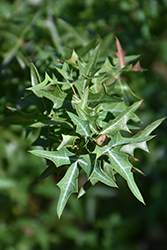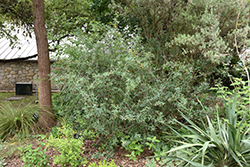Fri & Sat 8am - 8pm
Sun 8am - 7pm
Anytown, USA 12345
fax: 261.787.0463
e-mail: info@successgc.com


Plant Finder

Height: 6 feet
Spread: 6 feet
Sunlight:
![]()
![]()
Hardiness Zone: 6b
Other Names: Wild Currant, Berberis trifoliolata, trifoliata
Description:
A compact, mounded shrub with holly-like gray-green leaflets in groups of three joined at a central point; very adaptable, low maintenance and drought tolerant; best if full sun but will tolerate light shade
Edible Qualities
Agarita is a medium-sized shrub that is commonly grown for its edible qualities, although it does have ornamental merits as well. It produces red round berries which are usually ready for picking from mid to late summer. The berries have a tart taste.
The berries are most often used in the following ways:
- Preserves
Features & Attributes
Agarita features showy racemes of fragrant yellow flowers hanging below the branches from late winter to early spring. It has grayish green evergreen foliage. The spiny narrow leaves remain grayish green throughout the winter. It features an abundance of magnificent red berries in mid summer.
This is a dense multi-stemmed evergreen shrub with an upright spreading habit of growth. Its relatively fine texture sets it apart from other landscape plants with less refined foliage. This plant will require occasional maintenance and upkeep, and is best pruned in late winter once the threat of extreme cold has passed. It is a good choice for attracting birds and bees to your yard, but is not particularly attractive to deer who tend to leave it alone in favor of tastier treats. Gardeners should be aware of the following characteristic(s) that may warrant special consideration;
- Suckering
Aside from its primary use as an edible, Agarita is sutiable for the following landscape applications;
- General Garden Use
- Groundcover
Planting & Growing
Agarita will grow to be about 6 feet tall at maturity, with a spread of 6 feet. It tends to fill out right to the ground and therefore doesn't necessarily require facer plants in front, and is suitable for planting under power lines. It grows at a slow rate, and under ideal conditions can be expected to live for approximately 30 years.
This shrub is quite ornamental as well as edible, and is as much at home in a landscape or flower garden as it is in a designated edibles garden. It does best in full sun to partial shade. It prefers dry to average moisture levels with very well-drained soil, and will often die in standing water. It is considered to be drought-tolerant, and thus makes an ideal choice for xeriscaping or the moisture-conserving landscape. It is not particular as to soil type or pH. It is somewhat tolerant of urban pollution, and will benefit from being planted in a relatively sheltered location. Consider applying a thick mulch around the root zone in winter to protect it in exposed locations or colder microclimates. This species is native to parts of North America.

